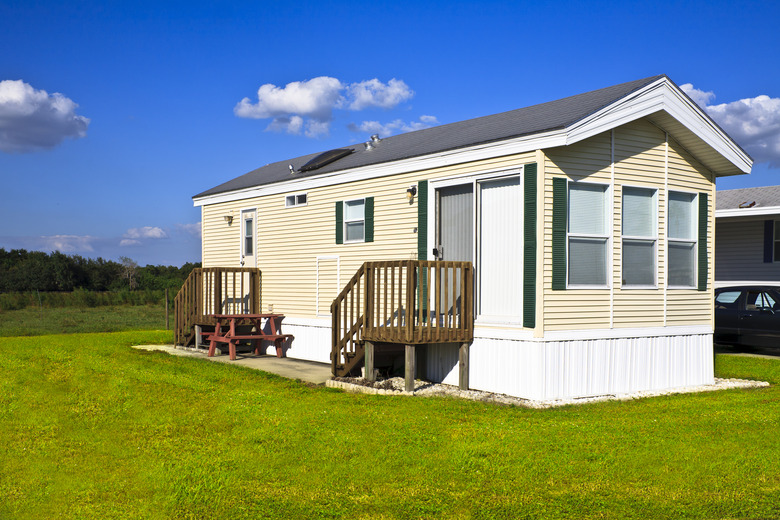How To Build Wooden Steps For Mobile Homes
Mobile homes are a great place to take a break and relax. Once you have your mobile home or RV, there are many customizations you can do to make it more comfortable. One of these is building wooden steps for easier access.
What Are Wood Mobile Home Steps?
What Are Wood Mobile Home Steps?
Mobile home steps are typically part of a bigger porch, but can just lead up to a small platform or the front door itself. Sometimes, while saving up for a porch extension, mobile homeowners need to build some temporary stairs in order to safely access their home.
Key Terms for Mobile Home Stairs
Key Terms for Mobile Home Stairs
Before you undertake the stair building task, it's important to clarify some key terms. The first is rise-and-run, which refers to your step size. The rise is the vertical height between each step, while the run is the horizontal foot space. The tread is the name of the part of the stair you step on. The stringer is the name of the stair frame.
The slope is the diagonal aspect of the stairs – the higher the slope, the steeper the climb. The nose is the part of the stair which protrudes over the rise. A banister is a mobile home step railing.
How To Build Mobile Home Stairs
How To Build Mobile Home Stairs
Building mobile home steps or wooden RV steps is fairly easy, and wood is the most cost-effective material for the job.
You'll first need to take the measurements for your steps. You should measure the rise, and then decide on the slope (around 30 degrees is good). With these measurements, you can then decide on the number of steps and length of the run.
Taking the maximum recommended rise height of 7 inches, divide the full height of the stair space by it. This will give you're the number of rises you'll need. You'll also need the same amount of runs.
It's recommended you build a stair landing to prevent your stairs from sinking into the ground. This is typically a wooden frame filled with gravel.
Next, you'll need to cut the stringers for the frame. You need two of these but can have more, too. Using a framing square, line up with the riser height and tread width. Trace each step onto your lumber.
You can then cut out your stringers, stopping the saw and using a cut-out saw to finish each cut. Cut a notch into the bottom of both stringers.
If you're making them yourself, you'll also need to cut out your rises and runs at this stage.
Now you can attach the stringers to the mobile home or RV. This can be done with nails or brackets. Your steps can then be nailed onto your stringers. Apply wood glue over the joints to secure. Finally, install your banister, again using nails and wood glue.
After you've constructed your steps, it's a good idea to call the building department for a safety inspection.
